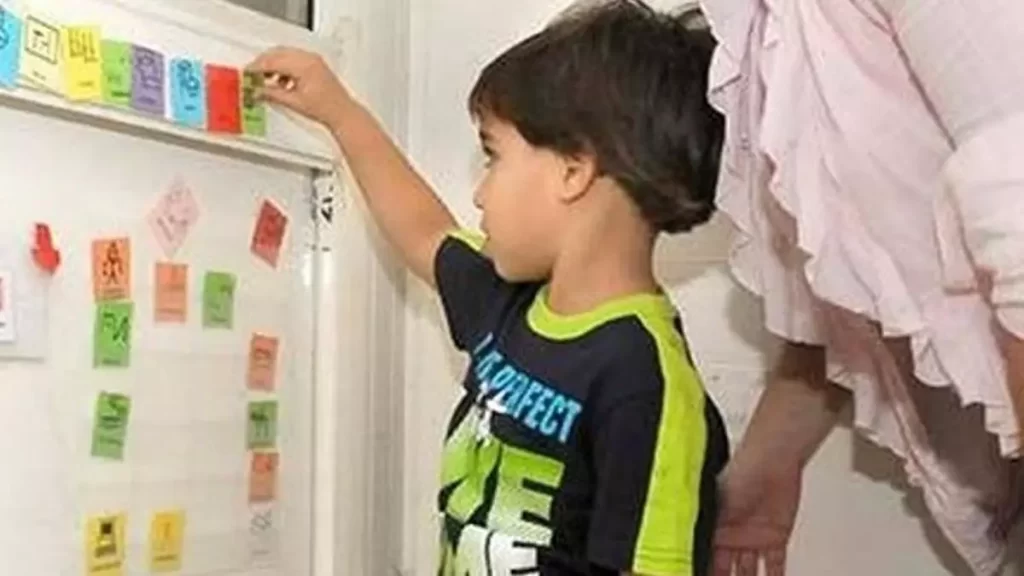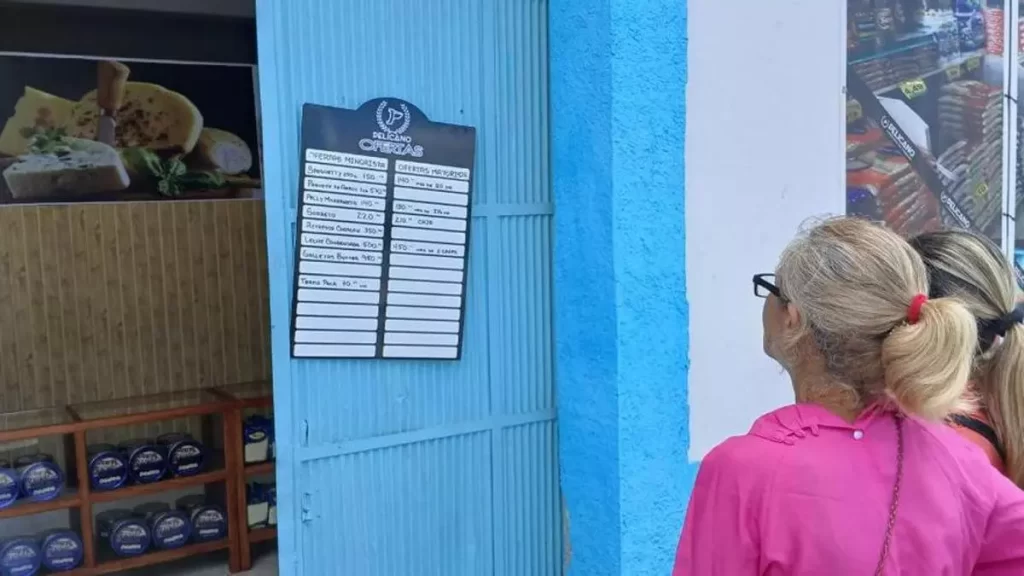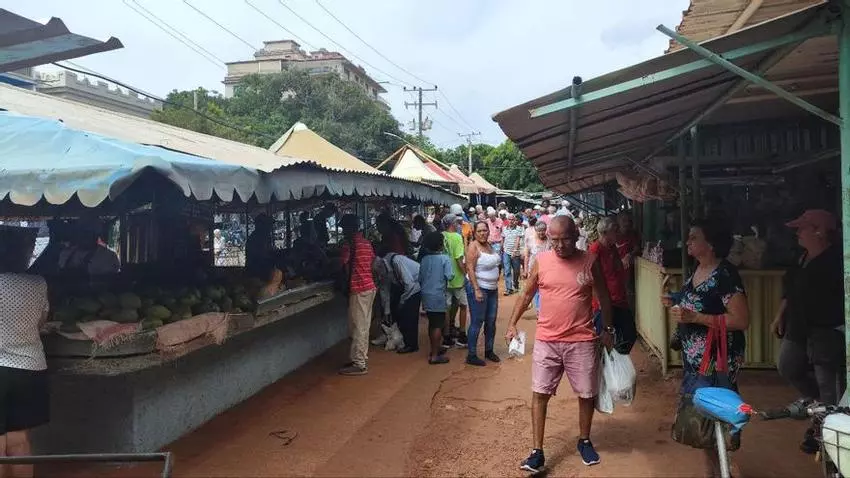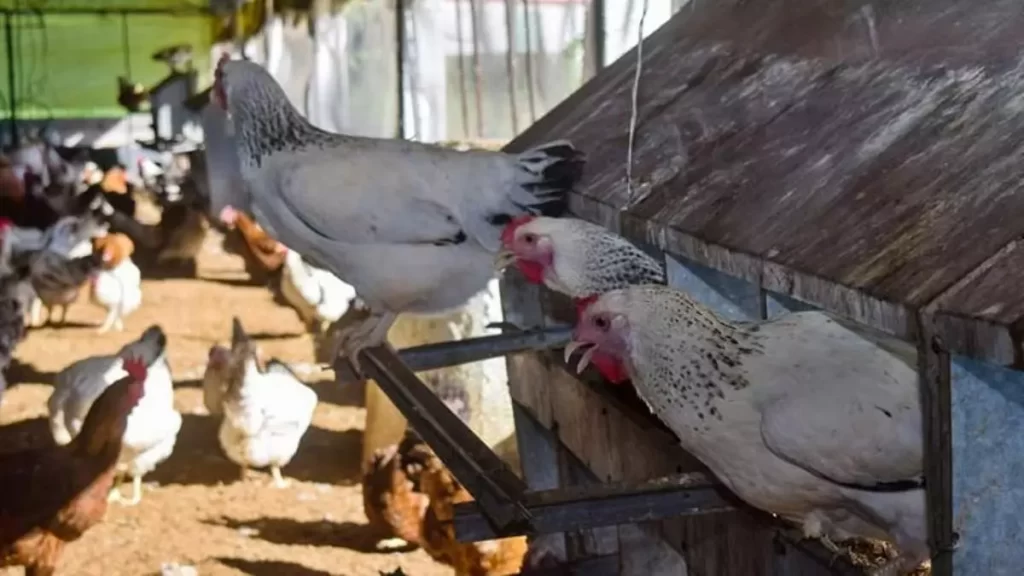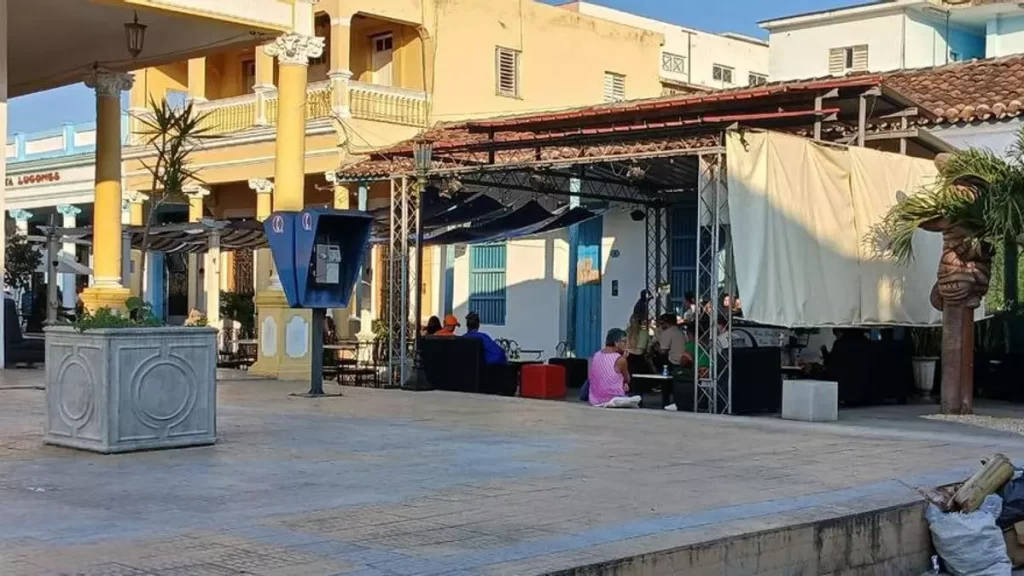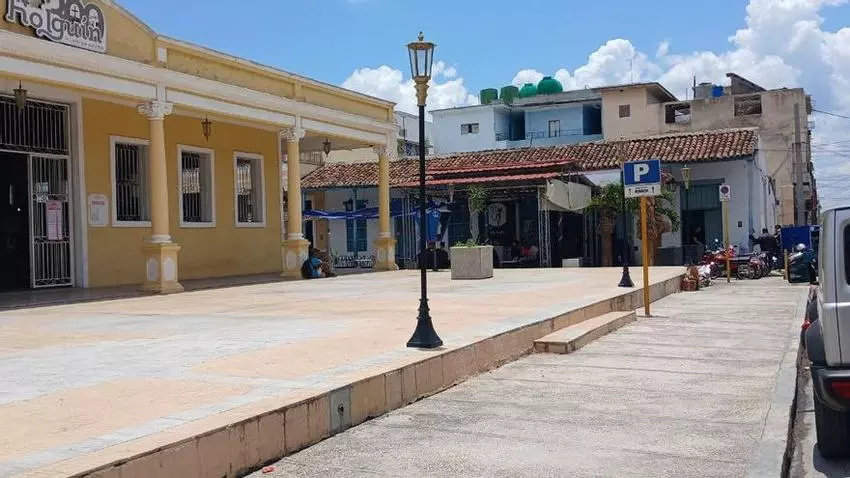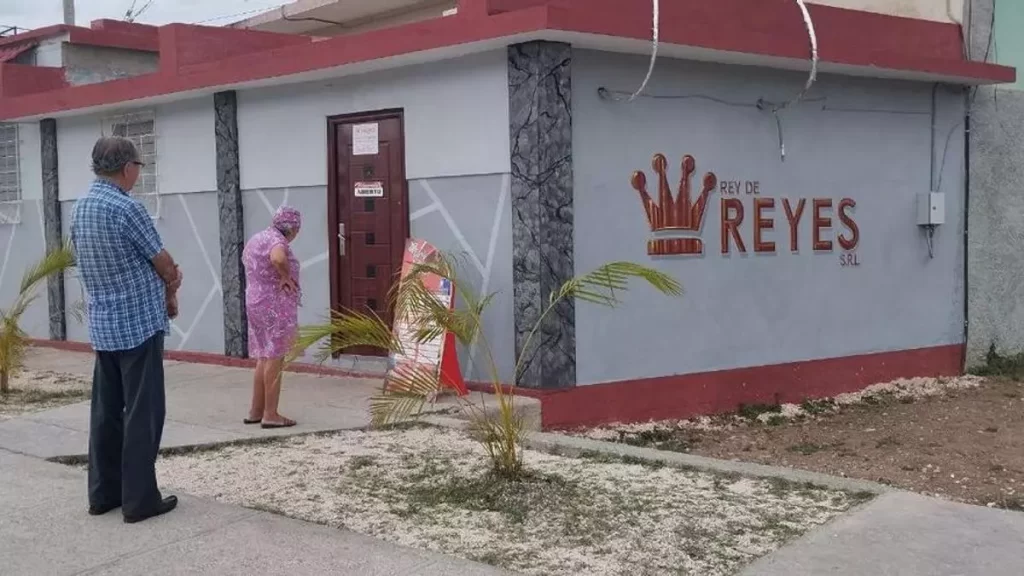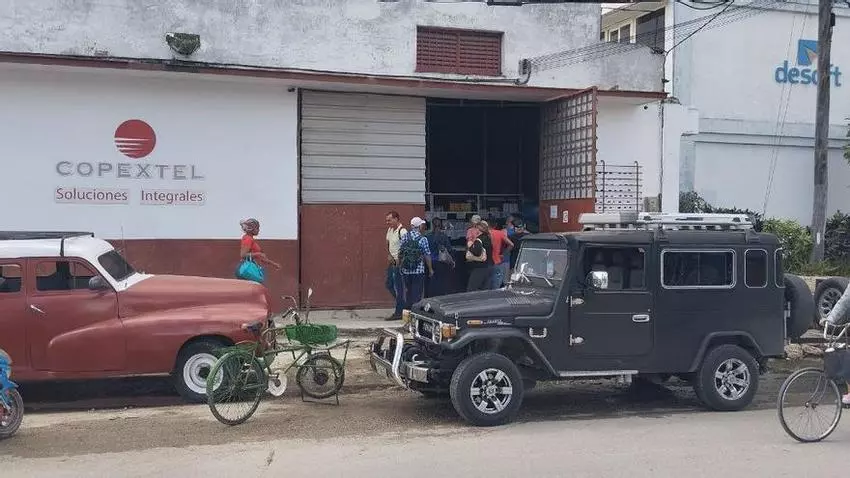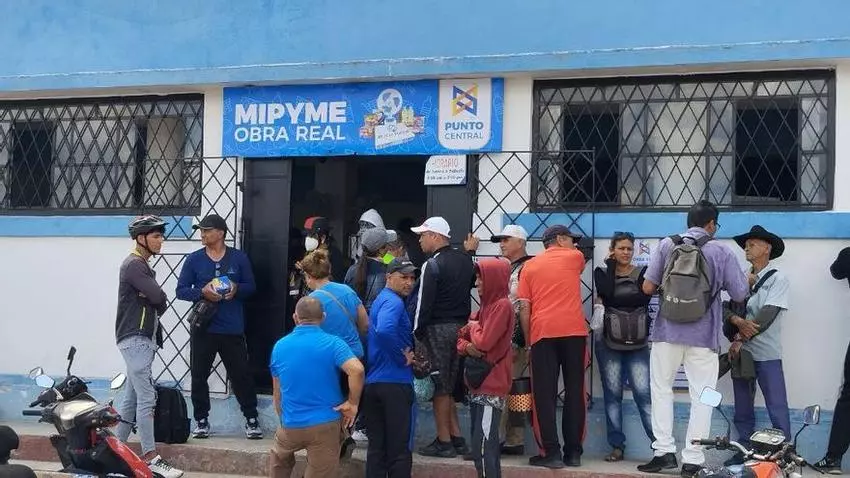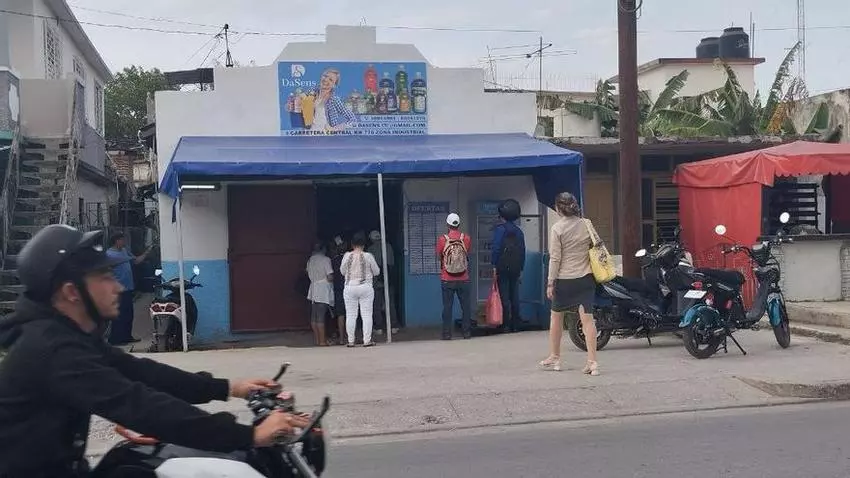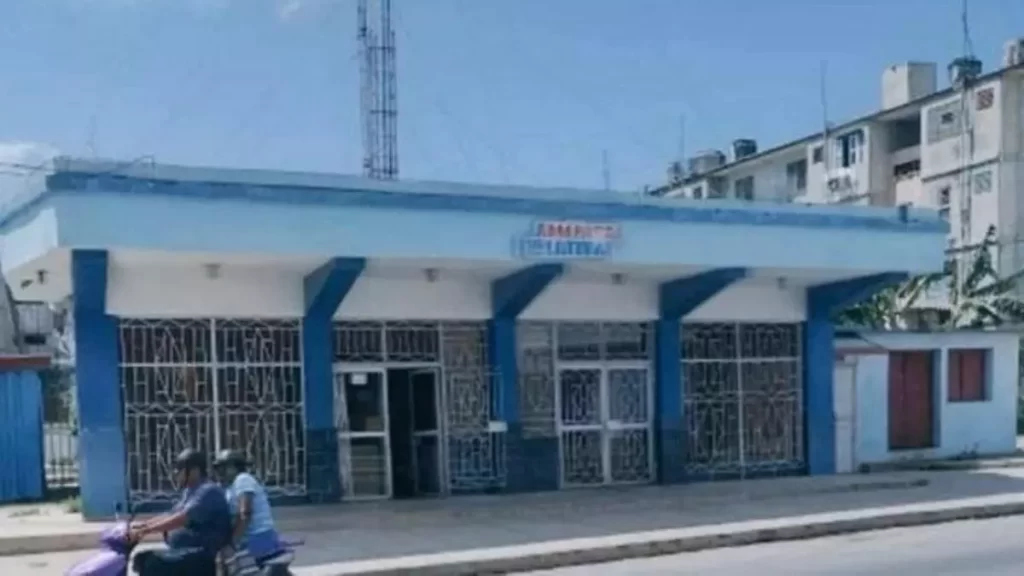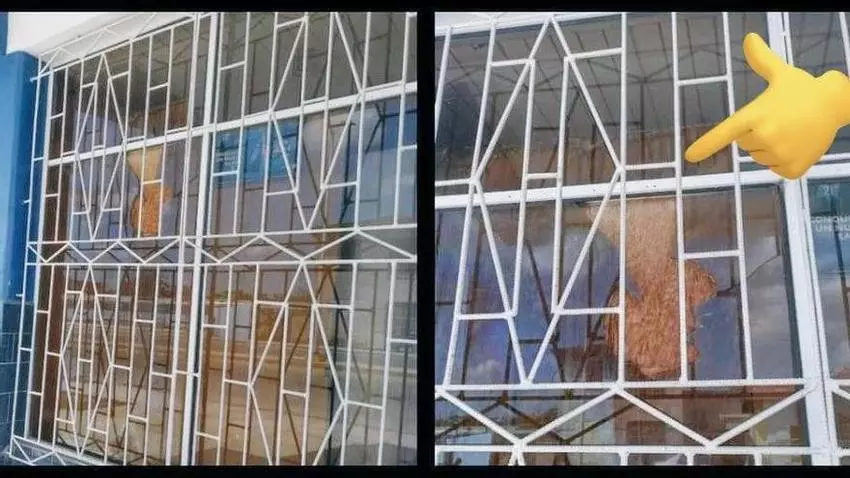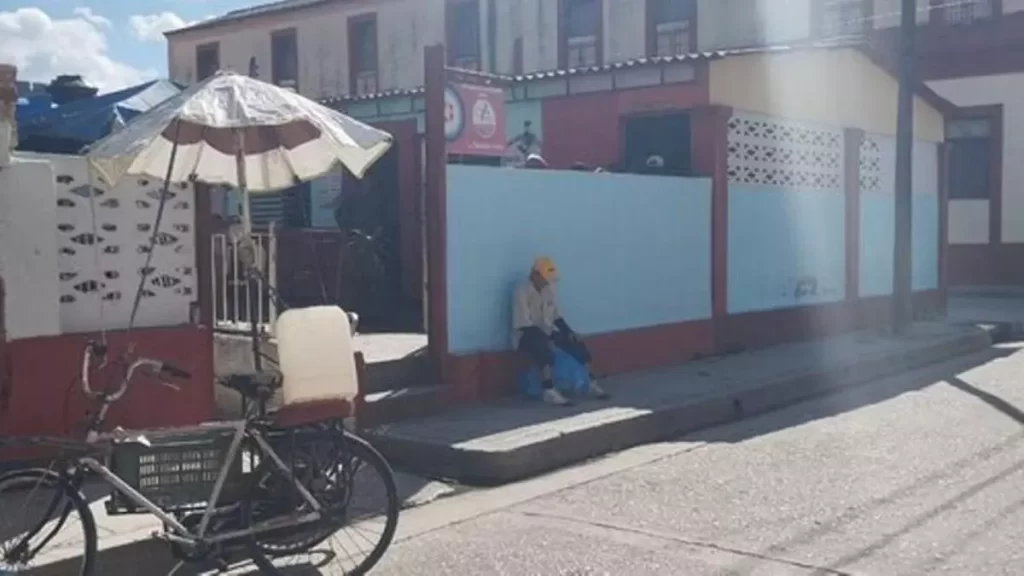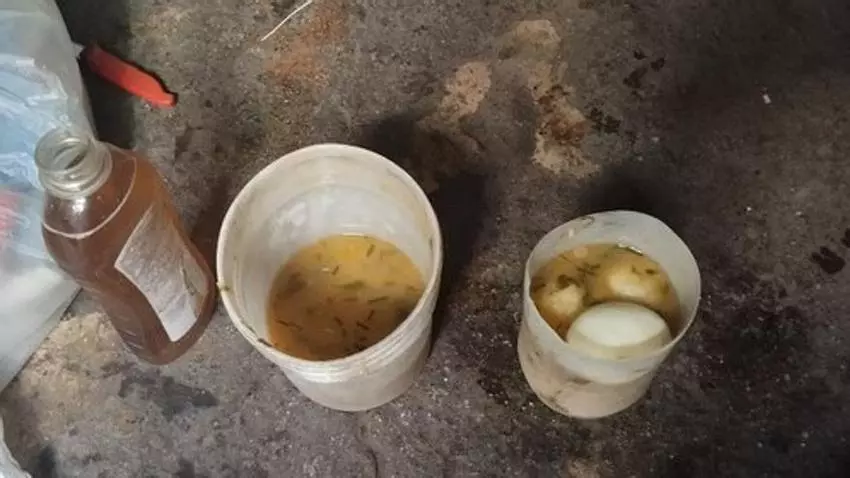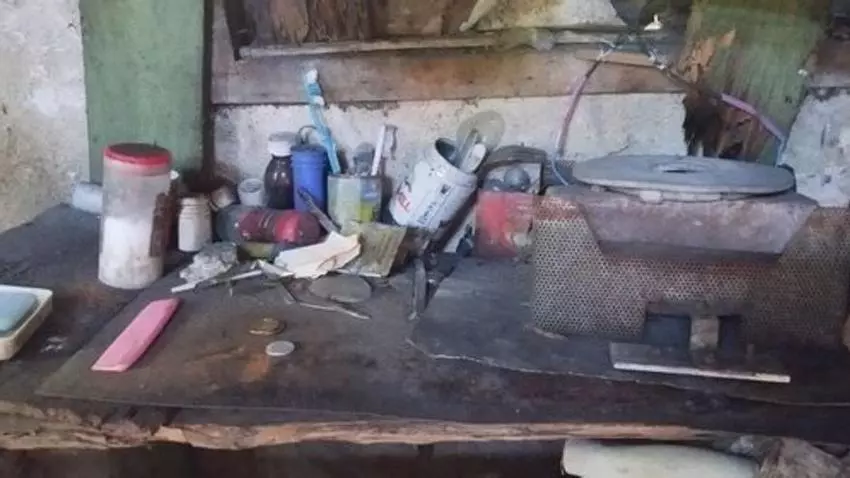- In Holguín, hospitals are in the dark, and anguish is growing before the arrival of Hurricane Oscar
- There are mile-long lines to buy propane to cook food before it rots in the refrigerators

![]() 14ymedio, Mercedes García/Miguel García, Sancti Spíritus/Holguín, 20 October 2024 — When Olimpia saw last Friday that her entire neighborhood in Sancti Spíritus was in a blackout, she thought that the episode was just one more of the many they have been having for weeks, when the daily deficit of the Electric Union did not fall below 1,000 megawatts. It was not until a neighbor uttered the words “total disconnection” that her concern skyrocketed. In the last two days, her block only recovered service once, this Sunday morning, only to lose it again soon after.
14ymedio, Mercedes García/Miguel García, Sancti Spíritus/Holguín, 20 October 2024 — When Olimpia saw last Friday that her entire neighborhood in Sancti Spíritus was in a blackout, she thought that the episode was just one more of the many they have been having for weeks, when the daily deficit of the Electric Union did not fall below 1,000 megawatts. It was not until a neighbor uttered the words “total disconnection” that her concern skyrocketed. In the last two days, her block only recovered service once, this Sunday morning, only to lose it again soon after.
“The whole night all of Sancti Spíritus was in the dark,” explains the woman, who has seen the city transform into a ghost town in a few hours. “People only go out to buy food, but there is not even that. Many have lost all the food they had because without a refrigerator it begins to rot. The bread that is mainly supplied by private bakeries also suddenly disappeared,” she says.
Olimpia explains that the bread from the bodega (ration store) continues to arrive, but – she highlights – those places have not been spared from the consequences of the general blackout. “Since there is no current, they are selling all the rationed chicken that came in for the ration quota until it runs out in all the bodegas. It’s one small piece of chicken thigh, but people buy it even if they have to cook it right away so it doesn’t spoil.”
Olimpia, like other Cubans, saw her parents and grandparents “resolve” with what they could to overcome any situation. The inventiveness she received by inheritance, however, did not prepare her for a situation like the present one, she says. “People are going crazy watching what they eat, how they cook. Gas lines have become impossible. They suspended the tickets in the on-line application because, since there is no connection, there is no way to know if it was your turn. Only the physical line works. I signed up and have a number close to 700,” she says. continue reading

The alternatives in these days of uncertainty, she says, are few: “In several places they sold some broth for eight pesos.” In practice, Cubans have had to manage as they can. “This morning I was able to charge my generator and am using it only for the fridge, so that my meat doesn’t spoil. Otherwise, I stay in the dark,” she states.
Olimpia has been able to communicate very little with her family, which she finds – as she explains – as uninformed as she is. “The radio works occasionally. This morning I was able to listen to it for three or four hours, but the news gave little information, and the only useful thing they said is that in this area, at least until Wednesday, there will be no electricty.” The internet connection, she continues, has also been “terrible” these days. “The cell phone continues to show 3G or 4G, but in reality you can’t send messages or make calls. The information that people have is what they hear from the neighbor, who in turn heard it from someone else.”
The movement of the authorities also does not give any indication that there will be changes soon. “There is an orientation for workplaces that they cannot turn on the generators, and those who turn them on out of necessity cannot turn on air conditioners or computers. Only the essentials. The transport is not working either. There is only one bus going around in the mornings, but there are almost no people on the streets.”
One thing, however, has caught Olympia’s attention these last few days: “The military is running around like crazy ants.” “There are policemen and agents everywhere, especially those in green uniforms that say Operational Guard. I don’t know what they are doing, but they are mobilized,” explains the woman, who saw an army vehicle pick up two neighbors from her block. “The wife of one of them told me that she has not yet heard from him,” she adds.
In Holguín, Manuel has seen the same symptoms of the crisis. Refrigerators full of spoiled meals, the stench of garbage accumulated for days, the scarcity of water that begins to hit families and, to top it off, the arrival of Hurricane Oscar this Sunday that keeps the people distressed by the scarce resources they have and the little information they receive.

“I had to go out to a field on the outskirts of the city to be able to contact my family. I got as close as I could to an antenna, and although the connection was bad, I was able to call. However, all the numbers I dialed were off or out of the coverage area,” Manuel explains .
The situation in the provincial capital, he summarizes, is “as everywhere”: dark. “I talked to my 70-year-old grandmother, who lives in the San Rafael neighborhood, and she told me that she had to cook with wood,” says Manuel, who explains that in recent hours the residents in the city have bought out the propane tanks to stock up before the effects of Oscar are felt in the province. “The lines are miles-long, with hundreds of customers waiting to buy. There are people who got in line at two or three in the morning, and after 12 hours they are still there,” he says.
A visit with his sick mother in the Lucía Iñiguez Surgical Clinical Hospital allowed him to see a side of the crisis that he would never have imagined. “Everywhere they say that electricity has been prioritized to hospitals, but when I entered all the doctors were giving consultations in the dark,” he recalls.
The tension, he explains, could be felt in the corridors, where even the doctors and nurses openly expressed their discontent. “I passed by a consultation and listened to a doctor, very frustrated because there is no staff even to perform operations. At the moment they are only attending to emergencies, but the situation worsens as the cases accumulate,” says Manuel, who heard the health worker complain about the lack of resources. “He said that he recently had to give a patient a list of everything he had to get to have an operation, from syringes and catheters to antibiotics and topical anesthesia,” he adds.
I also heard two nurses complain that Public Health does not give them time off because many people have left. There is a lack of staff in the internal pharmacy, in the operating rooms, in the specialist consultations,” he lists, saying that, at first glance, you can see that “the hospital is almost empty.”
The situation has escaped the hands of the authorities, who do not even efficiently reach the population to explain the collapse of the SEN or the arrival of Hurricane Oscar. And the confluence of the two worries Cubans. “Since they reported this disaster at the national level, people are very upset,” reflects Olimpia, who soon abandons the theme and returns to reality: “What are we going to do? Where are we going to go?”
Translated by Regina Anavy
____________
COLLABORATE WITH OUR WORK: The 14ymedio team is committed to practicing serious journalism that reflects Cuba’s reality in all its depth. Thank you for joining us on this long journey. We invite you to continue supporting us by becoming a member of 14ymedio now. Together we can continue transforming journalism in Cuba.


